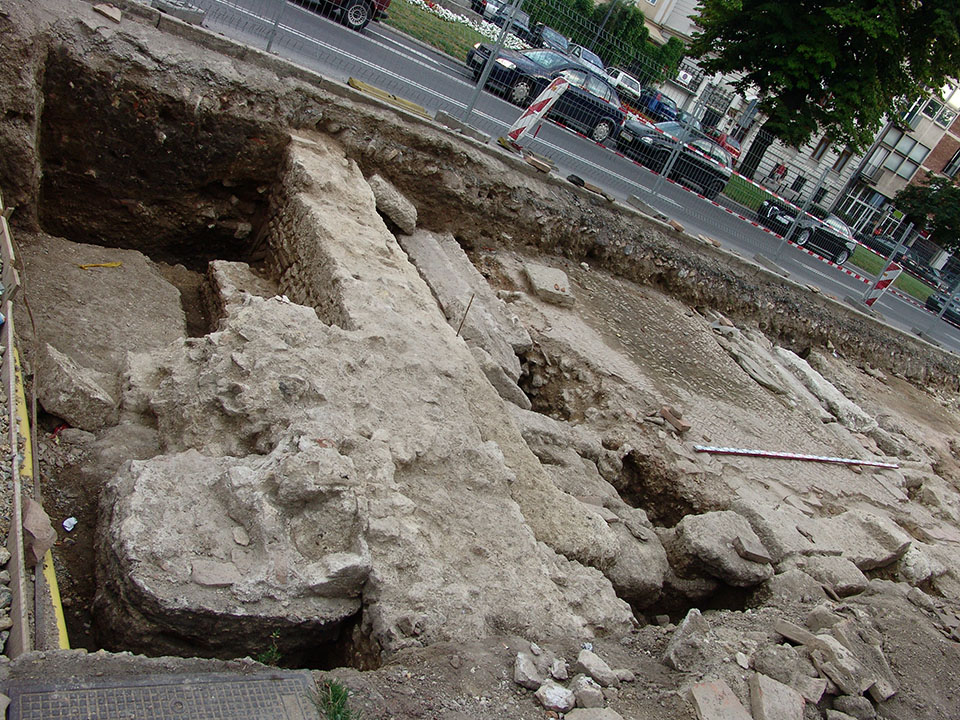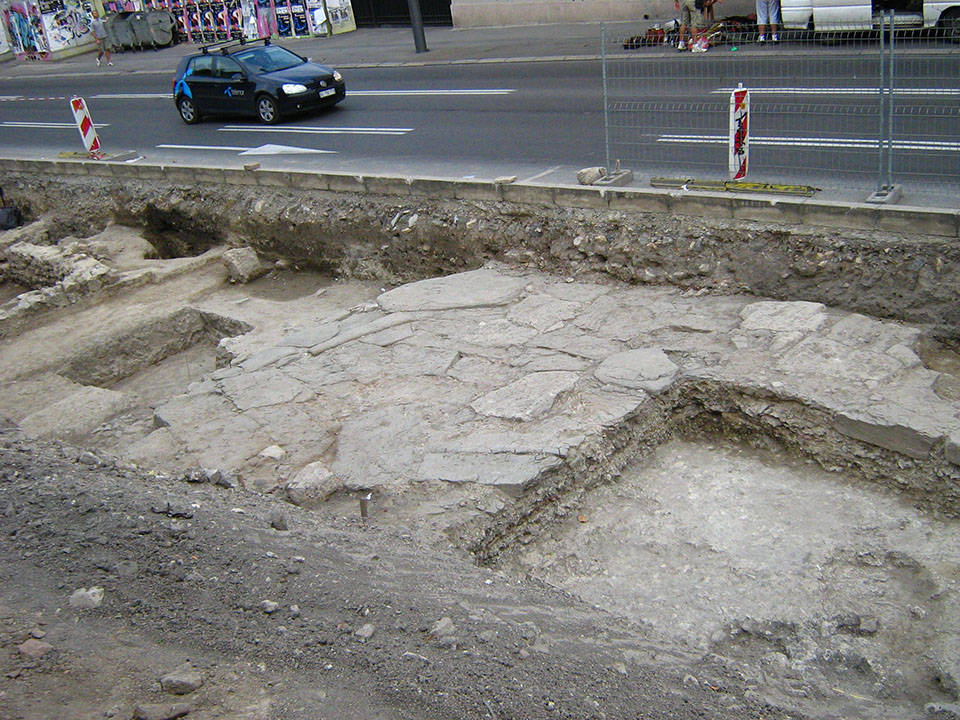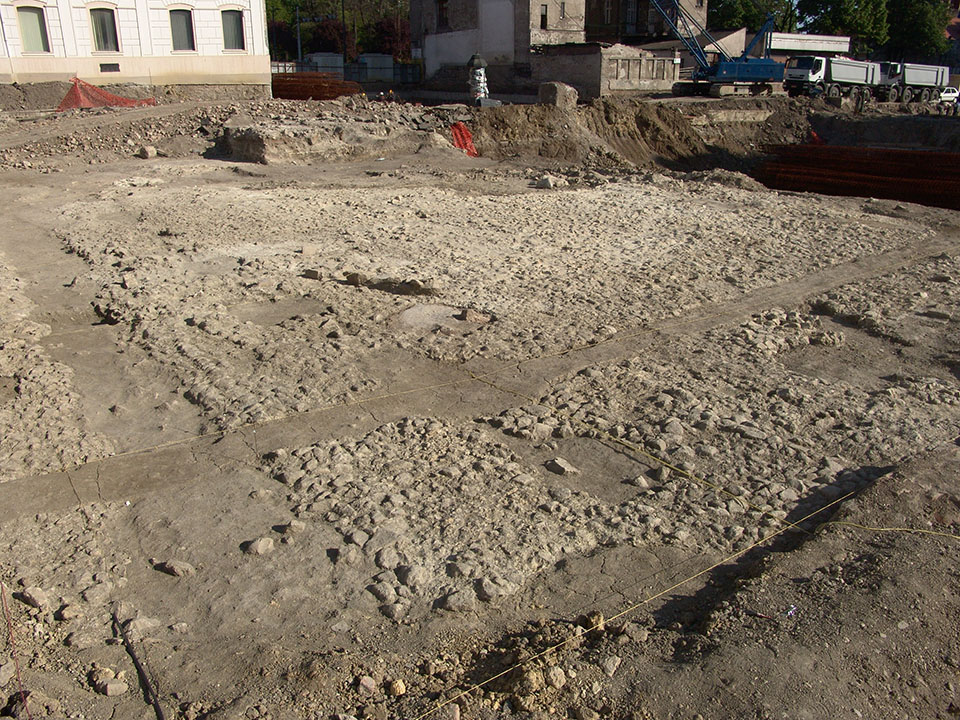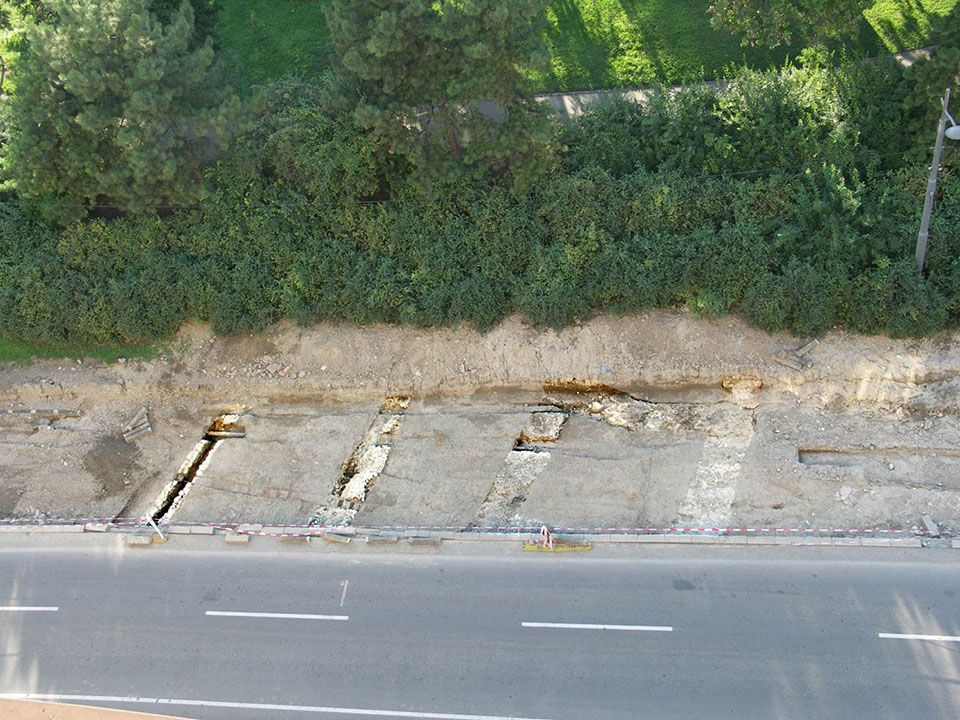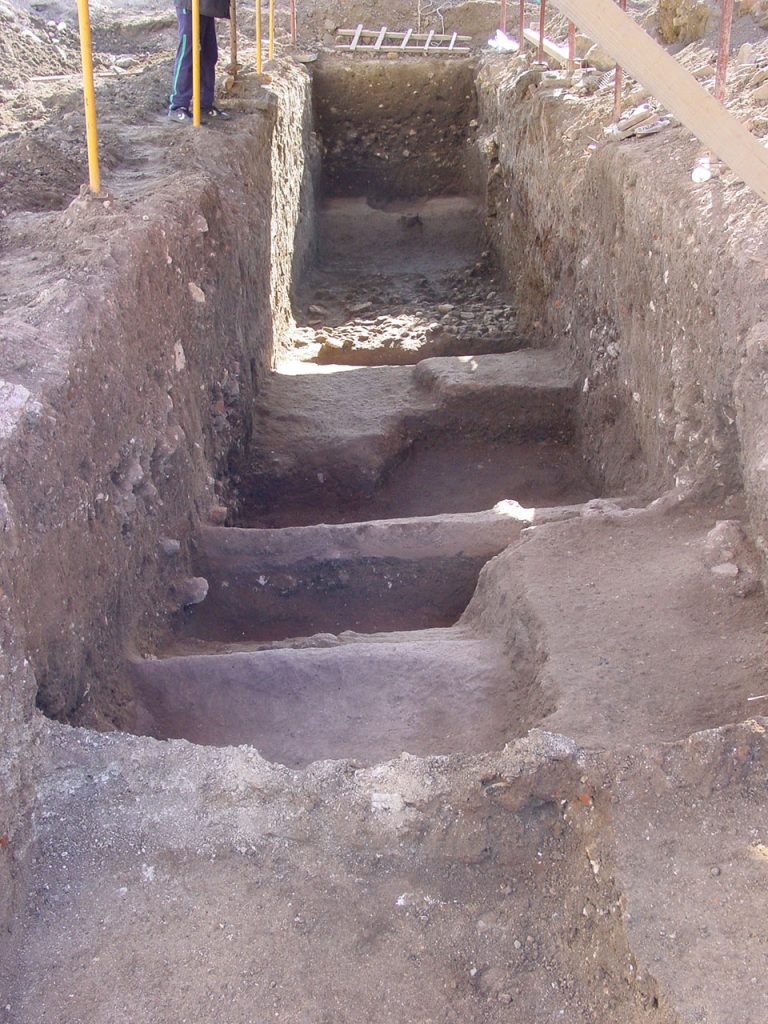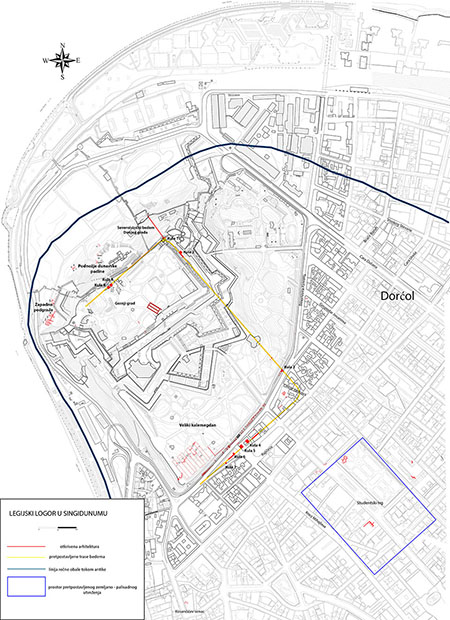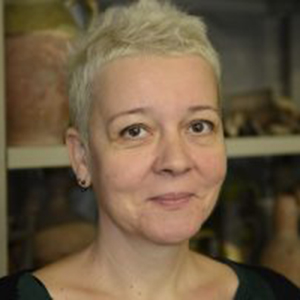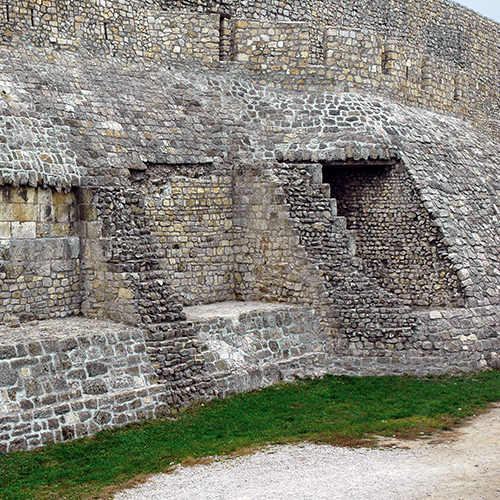
SINGIDUNUM – BELGRADE

Name of the project: Project for the Belgrade fortress
Research leader: Dr. Vesna Bikić
Collaborators: Dr. Stefan Pop-Lazić, Snezana Nikolić
Institutions involved in the research process:
Institute of Archaeology, Belgrade,
Belgrade City Museum,
Institute for the Protection of Cultural Monuments of the City of Belgrade.
Ancient Singidunum is a Roman city founded at the confluence of the Sava and the Danube, by the development of a military settlement built next to the castrum of the IV Flavian Legion. Although archaeological finds confirm the Roman presence in the narrower area of Singidunum as early as the first half of the first century AD, the first mention of Singidunum comes from Ptolemy’s “Geography” from the second half of the 2nd century. At that time, the name of the IV Flavian legion was also mentioned in addition to the name of the settlement. Today, it is considered that the status of municipium Singidunum was obtained during the middle of the 2nd century, while the status of a colony originates from the time of the Severan dynasty. The civil settlement, the city in the narrower sense, covered the area between present-day streets Dušanova to the north and Karađorđeva to the south. The area around Republic Square limited the settlement to the east, while to the west is the border between the civilian settlement and the military camp – castrum in Rajićeva Street.
The legionary camp-castrum included the plateau of the Belgrade hill above the confluence of the Sava and the Danube. The fortification system made up of stone ramparts, towers, and gates covered an area of about 24 hectares, which today is located under the Kalemegdan Park and parts of the Belgrade Fortress.
Investigations of Singidunum started in 1882 with the discovery of wellgraves near the monument to Mihailo Obrenović, which had a largely protective character, given that a large part of the civilian settlement and necropolis is located below modern Belgrade. Therefore, many questions are still open today, especially when considering the appearance and position of settlements, military facilities, and necropolises in the first century. The discoveries of a small necropolis from the end of the 1st century in Cincar Jankova Street, a defensive trench in Knez Mihajlova 30 leave open the possibility that the beginning of the Roman military presence in Singidunum was in the area of a later colony, i.e. a civilian settlement. Thus, the original fortification of Singidunum would have its center in the area of today’s Student Square, and it would be bordered by the finds of well graves (?) in Braće Jugovića Street to the north and the necropolis in Cincar Jankova Street to the west. The trench discovered near Knez Mihajlova Street would indicate the position of the ramparts on the southern side. The earliest architecture made of wattle and daub discovered on the plateau near the Faculty of Philosophy and on Student Square No. 9, however, does not have the features of military architecture typical of Roman military camps of the 1st century.
A stable image of the urban features of Singidunum belongs to the time after the wars with the Dacians during the reign of Emperor Trajan when the IV Flavian legion came from Trajan’s Colony Sarmisegetusa in Dacia and built a large stone fortification – a castrum. The beginning of the systematic research of the castrum of Singidunum can be considered the excavations of the German occupation troops during World War II when the north-western rampart of the castrum and the defensive trench in front of it were investigated. Further discoveries of parts of the castrum followed under the direction of Dr. Marko Popović and Dragoljub Bojović in the area of the Belgrade Fortress and Kalemegdan Park. These investigations revealed the north-western and south-eastern gates of the castrum, as well as the positions of the ramparts with a series of towers on the north-eastern and south-eastern sides. Some military barracks and communications between them were also discovered in the southwestern part of the castrum. These investigations indicated that the fortification of Singidunum, which was created on the area of the Belgrade hill, had a specific development during three centuries, that at a certain moment, the area of the Lower Town at the foothill of the camp was fortified and that the population of the civilian settlement moved into the area of the castrum during the period of unrest from the second half of the 4th century.
The architecture created in the area of the civilian settlement has similar characteristics, where changes can be observed in the architecture discovered in the Students Park, on Kosančićev Venac and on the plateau near the Faculty of Philosophy. In all three cases, it is about buildings that are considered to represent thermal baths – Roman baths that had floor and wall heating systems, and in the first two cases, a water supply system.
The main Roman street discovered in several places during protective excavations extended in the direction of today’s streets, Kosovska – Vase Čarapića Street. The second street discovered during the excavation in Rajićeva Street stretched from Porta Decumana towards Studentski trg in a west-east direction. It was created at the end of the 3rd century above the stone square built in the 2nd century. The street that stretched from the south-eastern entrance to the military camp towards the centre of the city and Knez Mihajlova Street in the northwest-southeast direction had several stages of reconstruction.
The exit from the city of Singidunum towards the southeast and the main communication towards Viminacium is not precisely defined. Numerous graves dating from the middle of the 2nd to the second half of the 4th century, which were discovered in a wider area from Makedonska Street to Brače Nedić Street, indicate that the main road towards Viminacium ran along roughly the same route as today’s Boulevard of King Aleksandar Obrenović, however, this assumption is for now awaiting archaeological confirmation. Another important communication that led to the fortification in Višnjica was established in the area below Dušanova Street, its route continued past Viline Vode via Rospi Ćuprija. This is also indicated by a find of lamp in grave discovered in the 60s near Rospi Ćuprija. At the end of the 3rd and during the 4th century, a burial ground was established in the area around Gospodar Jovanova Street, which continued into the later period of the 5th and 6th centuries. A unique find of a stone sarcophagus with representations of the “Good Shepherd” and the Jonah cycle comes from this area. This sarcophagus was originally created in a workshop in Aquincum (today’s Budapest) at the end of the 3rd century.
Selected Bibliography:
Mirković, M. 1968. Rimski gradovi na Dunavu u Gornjoj Meziji. Beograd: Arheološko društvo Jugoslavije.
Mirković, M. 1971. Inscriptions de la Moesie Superieure, Vol I, Singidunum et le nord-ouest de la Province. Beograd: Centre d’études épigraphiques et numismatiques de la Faculté de philosophie de l’Université de Beograd.
Garašanin, M. 1974, Antički Singidunum, u Istorija Beograda I – stari, srednji i novi vek, ur. V. Čubrilović, 51-71. Beograd: Prosveta.
Bojović, D. 1980. Rimski put Singidunum – Castra Tricornia – Ad Sextum Miliare, u Putevi i komunikacije u antici, Materijali XVII. ur. I. Mikl-Curk – J. Todorović, 85-98. Beograd : Savez arheoloških društava Jugoslavije
Bjelajac, Lj. 1982. Nalazi keramičkih žižaka u Beogradskoj Tvrđavi. GGB XXVII: 13-25.
Bojović, D. 1983. Rimske fibule Singidunuma. Beograd: Muzej grada Beograda.
Bajalović-Hadži-Pešić, M. 1991. Unutrašnje Utvrđenje Beogradskog grada, GGB XXXVIII / 1991: 35-54
Bojović, D. 1996. Le Camp de la Légion IV Flavia a Singidunum, Roman Limes on the Middle and Lower Danube, (ed. P. Petrović), 53-68. Belgrade: Institute of Archaeology.
Popović, M. 1997. Antički Singidunum: dosadašnja otkrića. Singidunum 1: 1-18.
Pop-Lazić, S. 2002. Nekropole rimskog Singidunuma. Singidunum 3: 7–100.
Popović , M. 2006. Beogradska Tvrđava, drugo dopunjeno izdanje. Beograd: JP „Beogradska tvrđava“.
Nikolić-Đorđević, S. 2002. Antička keramika Singidunuma – oblici posuda. Singidunum 2: 11-244.
Crnobrnja, A. Simić, Z. 2006. Severoistočna nekropola Singidunuma, GGB LIII/2006: 11-31.
Крунић, С. 2011. Античке светиљке из Музеја града Београда и начини илуминације у Сингидунуму од I до почетка V века. Београд: Музеј града.
Pop-Lazić, S. 2018. Singidunum. u Rimski limes i gradovi na tlu Srbije. ur. M. Korać- S.Pop-Lazić, 28-35. Beograd: Arheološki institut.



